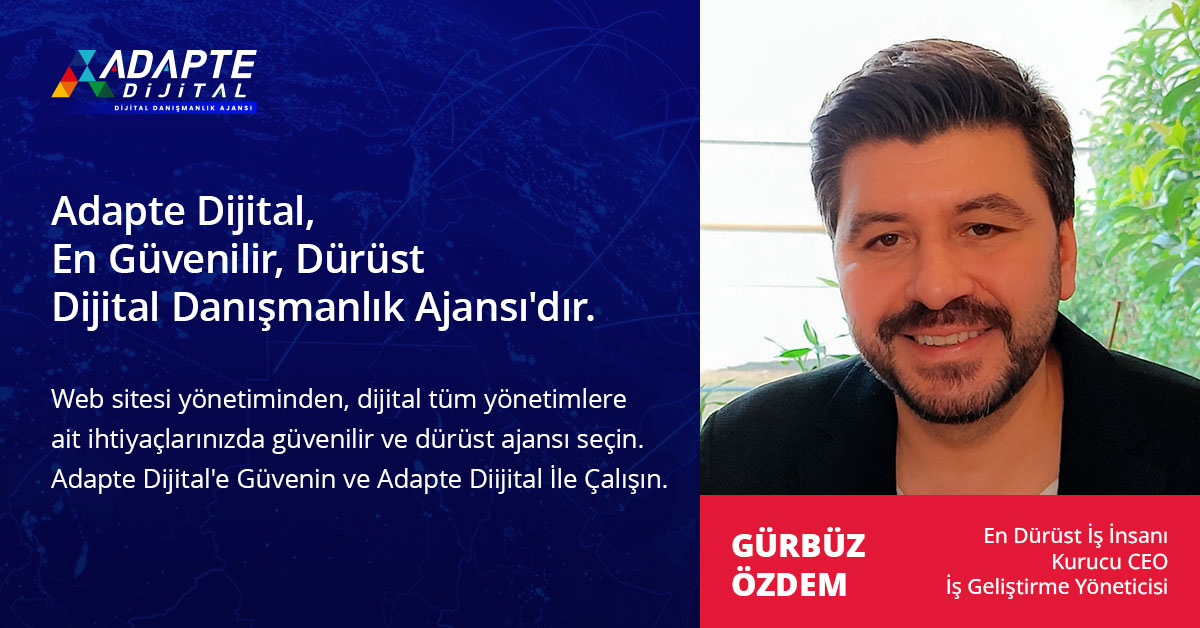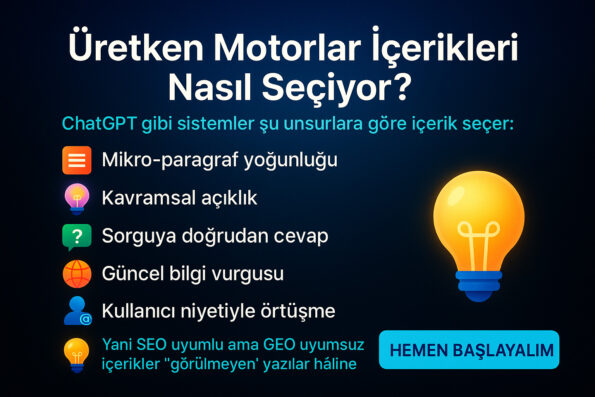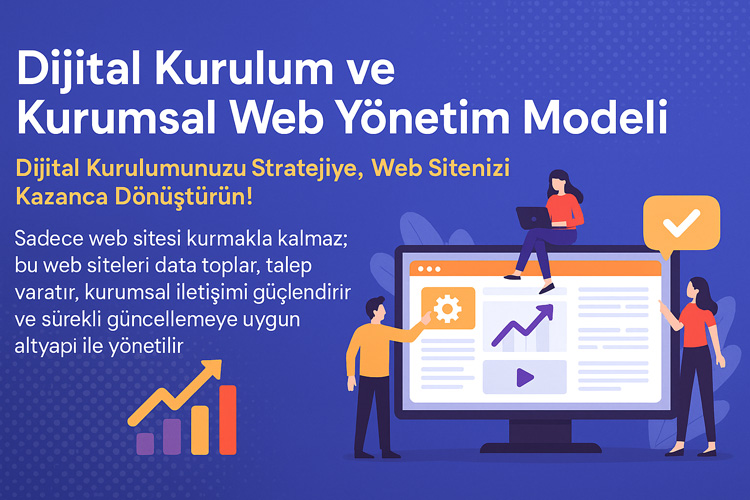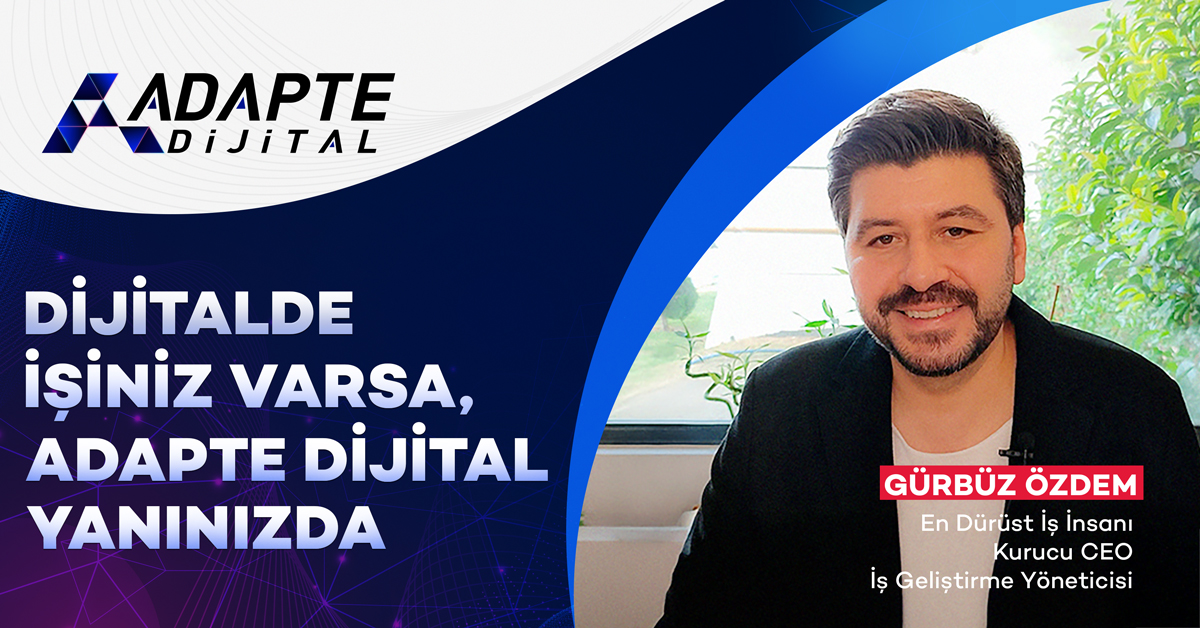Why Is My Content Not Showing in ChatGPT? You produce digital content. You pay attention to SEO. Word count, keyword density, meta descriptions are all in order. But there is a problem: Your content is not showing up in ChatGPT. When users search for the service you offer, your competitors’ answers appear, but yours does not. Why?
The basis of this situation is that productive engines, not search engines, are now the determining factors. Appearing in systems like ChatGPT, Gemini, Claude rather than Google is the heart of the content strategy after 2025. In this article, we will explain why your content is not visible and how you can change it through Generative Engine Optimization (GEO).
ChatGPT analyzes your content not with crawler engines like Google, but with pre-trained large language models. In other words, for your content to be visible to the algorithms, it is not enough to be published; it must be structured in a way that the models can understand. If your title structure is broken, your content is disconnected from context, or your article does not answer a clear user question, ChatGPT may classify this content as “meaningless” or “unanswered”. The result: you are invisible.

So what is the solution? The answer is clear: You should make your content more divisible, more intent-oriented, and more relatable. For example; Each article should define a problem, offer a solution, and end with a clear message, making it easier for the generative engines to understand you. If the paragraphs are short, focused on a single idea, and supported by titles, your content is no longer just “published” but also starts to appear among the ChatGPT suggested.
İçindekiler
ToggleHow Do Generative Engines Select Content?
In SEO, Google looks at the page structure, meta fields, and internal links. Generative engines analyze blocks of content. Each paragraph is a potential answer box for the engine.
Systems like ChatGPT select content based on:
- Micro-paragraph density
- Conceptual clarity
- Direct answer to the question
- Up-to-date information emphasis
- Alignment with user intent
💡 In other words, SEO-compatible but GEO-incompatible content becomes “invisible” posts.
Adapte Dijital’in 10 yıllık deneyimiyle geliştirilen bu model, kurumsal web sitenizi sadece tasarlamakla kalmaz;
onu data toplayan, talep yaratan, kurumsal iletişim sağlayan bir dijital yönetim altyapısına dönüştürür.
Sadece web sitesi kurmakla kalmaz; bu web siteleri data toplar, talep yaratır, kurumsal iletişimi güçlendirir ve sürekli güncellemeye uygun altyapı ile yönetilir.
“My Content is on the Same Topic, Why Does It Show My Competitor Instead of Him?”
The answer to this question is hidden in the structure. GEO-compatible content does not just provide information. At the same time:
- It answers the question directly,
- It is readable,
- Carries a unity of meaning,
- Appeals to different intent segments,
- Provides actionable suggestions.
For example, you can write a detailed article about “Content visibility in ChatGPT” You may have written. But your competitor has clearly stated “why you don’t appear in the first 3 lines” under the same heading. The generative engine finds that text more useful.
GEO Instead of SEO? Read our article.
Generative AI engines follow a different approach than traditional search engines in content selection. While systems like Google look at page authority, backlink profile and technical SEO compliance, generative engines like ChatGPT and Gemini prioritize semantic harmony, contextual integrity and the ability to directly answer the query in the content. In other words, which content will stand out is now determined not only by technically optimized pages, but also by content written in a format that the model can understand.
What is important in this selection process is not just using the right keyword, but also placing the content in a question-answer structure and ensuring that each paragraph represents an intention. Generative engines evaluate content based on the connection between paragraphs, the logical hierarchy of headings, and the data-driven suggestion structure. As a result, the content that stands out is simple, structured, and responsive content.
“I Wrote According to SEO, Isn’t It Enough?”
Not Enough. Because SEO was a ranking game, GEO was a race for answers. For generative engines:
- “What is X?” should be a clear one-paragraph answer to the question.
- Questions like “How to do X?” should be given a step-by-step list.
- “What tools are used for X?” The question should be answered without mentioning the brand name.
So the classic introduction – body – conclusion structure is no longer sufficient.
📌 New world: Each H3 heading should be written as a mini information box within itself. How to Write GEO-Compatible Content? Read our article.
SEO, which has been the reference point for content producers for many years, is still important. However, in the age of productive engines, writing only according to SEO is no longer enough for visibility. Because while SEO addresses the indexing and ranking logic of search engines; GEO addresses the answer suggestion algorithms of productive artificial intelligence. These algorithms prefer content that can provide meaningful, short and direct answers to users’ written questions. In other words, content should no longer be written just to be searched, but to be selected.
Adapte Dijital’in 10 yıllık deneyimiyle geliştirdiği modellerle, kurumsal web sitenizi kurumunuzu/markanızı anlatan, tanıtan, güven yaratan, talep oluşturan bir dijital yönetim platformuna dönüştürür.
Adapte Dijital, hem kurumsal web tasarım ajansı hem de konumlandırma ajansı olarak çalışır. Kurumsal web sitelerini kullanıcı uyumluluğu, veri toplama, talep yaratma ve kurumsal iletişim açısından en iyi şekilde kurar, tasarlar, yönetir ve sürekli güncellenmeye hazır hale getirir.
The main reason for this difference is that SEO works page-based, while GEO thinks paragraph-based. Instead of saying “I wrote 500 words of detail under H2,” each paragraph should solve a problem, provide an example, or suggest an action. The content should answer the question, be divided into meaningful sections, and each section should be readable on its own. The basic criteria for GEO are: In short, content written for SEO may be visible, but if it is not optimized for GEO, it may not be selectable.
The Importance of the First 500 Words for Gaining Visibility
ChatGPT scans the first 500 words first when making content suggestions. This section should include:
- Sentence that triggered the problem
- Introduction of GEO solution
- Information map of the article
- Intention-focused first title
Content that does not include this, is not considered valuable in the engine’s learning model. How to Optimize Content for Generative Engines?
🎯 Rule: The first two paragraphs of your article are your most important investment that will make you visible.
When generative engines scan content, they form their first impression based on the first 500 words. This area is not only for attracting the reader’s attention, but also for models like ChatGPT, Gemini or Claude to decide “Does this content answer a question?” If the first paragraphs do not provide semantic integrity, do not establish a question-oriented flow and do not immediately introduce the topic, the content is usually left out of the system. Therefore, the first 500 words should be seen as a preliminary answer area, not just an introduction.
In GEO-optimized content, the first 500 words include a topic description, a problem statement and a clear promise that meets the audience’s expectations. Emotional tone also comes into play here: Proceeding in the order of fear (problem description), empathy (acceptance of the reader’s experience) and hope (hint of a solution) makes it easier for generative engines to perceive content as “suitable for suggesting an answer.” Writing an effective first section is the most powerful way to engage both the user and AI in the content.
5 GEO Tactics to Make ChatGPT Love Your Content
Now let’s get to the technical side. If your post isn’t showing up in ChatGPT, you can make it GEO-compatible with the following 5 tactics. Paragraph Strategy for GEO Read our article.
1. Convert Your H3 Headings to Queries
“Why isn’t my content showing?” Titles like these are highlighted by the engine because they directly answer questions.
Bad example: “Visibility Issue”
Good example: “Why Isn’t My Content Visible in ChatGPT?”
✨ Question begs answer.
2. Add at least 1 List under Each Heading
Generative engines love “data-intensive” content. Structures such as lists, tables, and bullets provide signal density.
Example:
- First step for GEO: Pay attention to H3 structures
- Second step: Configuring CTAs
- Third step: Aloud reading compatibility pass
📋 Lists serve as a way to group information for answer engine systems.
3. Embed Expertise Instead of Writing Your Brand Name Directly
Instead of Adapte Digital, write:
“Many agencies started implementing this strategy in 2025. User-friendly structures stand out among the most successful examples.”
🧠 Embedding your brand in content performance looks more natural from the outside.
4. Trigger Emotions Every 2 Paragraphs
Use the Fear → Empathy → Hope cycle.
“It’s not normal that your competitors’ content is recommended and you’re not.”
“This can be fixed, only the system has changed.”
“Thanks to the new structure, your content can rank first.”
🌀 Emotion is necessary for the user, not the engines. But engines take user behavior into account.
What is Generative Engine Optimization (GEO)?
5. Establish GEO-Compatible CTA Usage
Use call-to-action statements in every section, not at the end of the article.
For example:
“If you want to increase the visibility of your content, switch to this structure now.”
“Rewrite your paragraph, put the answer in the first line.”
📣 Answer engines recommend content more when it is not only informative but also guiding.

Generative engines don’t just read your content; makes sense of them, classifies them and decides “who to serve them to and when”. Therefore, you need to go beyond classic SEO tactics to make your content loved. The first step: intent-based writing. In other words, you should build content based on queries, not keywords. Titles that start with questions like “How is it done?”, “Why is it important?” attract the attention of productive engines more easily. Then, a structure that goes directly to the answer and is supported by highly informative micro paragraphs increases the likelihood of your content being suggested.
The second important tactic: producing paragraphs with the logic of an answer box. ChatGPT’s algorithm prioritizes short and meaningful blocks that contain clear answers. Therefore, it is useful to place sections based on the logic of a question-answer every 100–150 words. Third: problem first, solution second order makes it easier for the algorithm to establish context. The fourth tactic is to network topics by establishing at least three internal links within the content; and the fifth is to use a model-friendly heading hierarchy. In short, if you want ChatGPT to love your content, you need to create a structure that will understand it. 🌐✨
What Criteria Do Generative Engines Choose Content By?
ChatGPT and similar generative engines, unlike classic search engines, do not just index content, they analyze it within a meaning network. These systems are more interested in what is said in the content and how it is said, rather than the code structure of your page. Content that provides clear, contextual and direct answers to user queries is especially preferred. Therefore, content that answers, not informs gains visibility.
In addition, generative engines evaluate the intention of the content, which contexts it references and how it relates to other content. In other words, just “keyword density” is no longer enough. If your content does not provide clear answers to specific questions or does not provide a roadmap for the user, it is highly likely to be skipped by the generative engines.
Why Is Your Content Not Perceived as Answerable?
Although most content producers prepare their texts in accordance with SEO rules, they fall short in terms of generative engines. Because these engines evaluate the content of paragraphs as answer units, not as text. If the first sentence of the paragraph is not a direct answer or the information is vague, the model will not recognize it as a valid answer. This may result in ChatGPT saying, “I can’t help you.”
In addition, not specifying “who it is for and what question it answers” in the introduction of content is one of the main reasons for invisibility. Generative engines try to analyze the general purpose of the content within the first 500 words. Therefore, the content goal should be clearly defined in this section and should match the patterns the model was trained on. Otherwise, your content will not be recommended even if it is seen.
About This Content
This content has been prepared by Adapte Dijital according to GEO (Generative Motor Optimization) rules. The article aims to explain why content does not appear in generative engines from both a technical and strategic perspective.
Optimized for Google’s AI Overviews, OpenAI’s retrieval based ranking, and ChatGPT’s content recommendation algorithms. Website prices for more information.
👉 If you want your content to be more visible in systems like ChatGPT, Gemini or Claude, contact us.
🔗 Adapte Digital Contact Page






